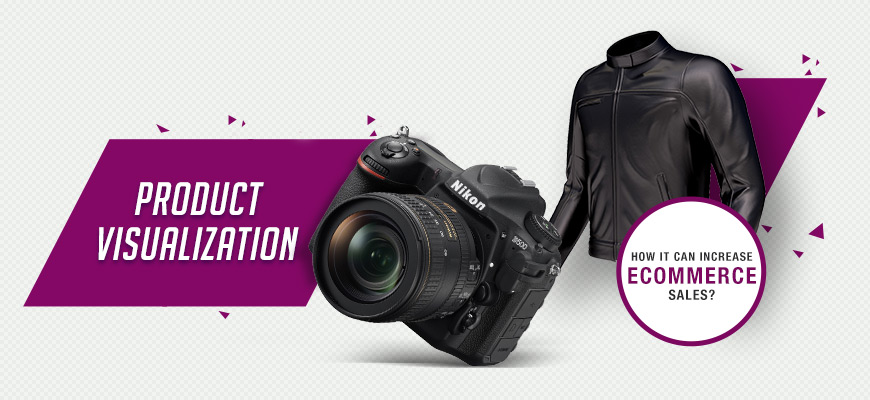E-commerce has revolutionized the shopping landscape, making global products accessible from the comfort of our homes. As thrilling as online shopping is, it lacks the tactile sensation of traditional shopping. Enter product visualization – the linchpin that blends the tangible with the digital.
Introduction to Product Visualization
Shopping online is no longer just about convenience. It’s about reimagining and recreating the essence of offline shopping in a digital space. Product visualization is that bridge. By allowing customers to ‘experience’ the product before purchase, it offers a touch of reality in the virtual realm.
The Importance of Visualization in E-commerce
Amidst the staggering volume of online choices, the visual appeal of a product is often the deciding factor. A compelling, lifelike visualization can convey the quality, usability, and even the feel of a product, influencing a guided selling best practices.
Types of Product Visualization
The myriad advancements in technology have rendered a plethora of visual configurations at our disposal. These tools aim to bridge the experiential gap that might be felt when shopping online, striving to replicate, and in some cases enhance, the in-store experience. Let’s delve deeper into the various modalities:
2D Images
Not just static photos, 2D images have evolved to offer much more. Enhanced features include magnified views that allow customers to zoom in on the tiniest details, showcasing products from multiple angles to give a more rounded perspective. The integration of interactive slides further empowers customers, letting them toggle between different product variations or color options. These dynamic features culminate in a rich visual understanding that offers a glimpse into the product’s real-life counterpart.
3D Models
Moving a step beyond 2D images, 3D product visualization introduces depth, presenting products in a three-dimensional space. Customers can interact with these models by rotating them, zooming in or out, and sometimes even virtually disassembling components. It’s akin to holding and examining a physical product in hand, turning it side to side, and looking at it from every conceivable angle. This level of interaction engenders a deeper connection with the product, enhancing the likelihood of a purchase.
Augmented Reality (AR)
Augmented Reality is akin to magic for the modern shopper. It seamlessly merges digital elements with the real world. Using AR, products can be superimposed onto a user’s immediate environment. Imagine being able to visualize how a pair of sneakers would look on your feet or how a new sofa would fit into your living room – AR makes such visualizations a reality. By bridging the gap between imagination and reality, Augmented Reality B2B paves the way for informed purchasing decisions.
Virtual Reality (VR)
Taking digital immersion up a notch, Virtual Reality constructs a comprehensive digital ecosystem for shoppers. With VR, shoppers can don a headset and walk through virtual aisles, pick up products, or even attend virtual fashion shows. They could stroll through a digital mall, visit various stores, and experience products in settings that closely mimic reality, all from the comfort of their homes. VR redefines boundaries and introduces a novel dimension to online shopping.
Generated Humans
A groundbreaking fusion of artificial intelligence and visualization, Generated Humans refer to AI-created, incredibly lifelike human images. Their hyper-realistic appearance can be tailored to fit various scenarios, making them adaptable models for diverse product ranges. Especially in fashion e-commerce, where seeing products on a human figure can influence purchasing decisions, these generated models provide scalability and flexibility. As they gain traction, the lines between real and virtual continue to blur, presenting intriguing possibilities for the future of e-commerce.
Benefits of Product Visualization
Why invest in visualization? Here’s why:
Enhanced User Experience
Vivid and interactive visuals create an immersive and memorable user journey, echoing the gratification of offline shopping.
Improved Conversion Rates
Transparent and detailed product representation dispels doubts, giving the customer the confidence to click ‘Buy’.
Reduced Product Returns
Accurate visuals set the right expectations, ensuring the product matches the customer’s anticipation, thereby minimizing returns.
Tips for Effective Visualization
- Stay updated: The digital realm is ever-evolving. Ensure you leverage the latest techniques.
- Prioritize clarity: Make sure the visuals are sharp, clear, and representative of the actual product.
- Include user-generated content: It’s impactful when potential buyers see real users with the product.
Case Studies: Success with Visualization
Across the globe, brands are capitalizing on the power of visualization, transforming the way they present products and interact with consumers. The success stories are both numerous and illuminating.
ZARA:
One of the world’s most iconic fast-fashion brands, ZARA, has embraced the digital age with its use of generated humans. Instead of traditional models, they’ve integrated these AI-created figures to showcase their latest fashion collections. This innovative approach not only cuts down on logistical hassles associated with organizing photoshoots but also offers a futuristic appeal to their campaigns. The result? A surge in online engagement, increased buzz on social media platforms, and a fresh, tech-forward brand image that resonates with the digital-native audience.
Sephora:
Beauty retail giant Sephora has always been at the forefront of innovation. Recognizing the potential of AR in enhancing the makeup shopping experience, they launched a virtual ‘try-before-you-buy’ app. Consumers can now use this feature to virtually test different shades and products on their skin, eliminating the guesswork often associated with online cosmetic shopping. This AR integration has not only given customers the confidence to purchase products but has also reduced return rates. Furthermore, it has led to heightened user engagement, with consumers spending more time on the app, experimenting with various looks, and ultimately, driving up sales.
Both brands, while operating in different sectors, underscore the power of embracing visualization. By understanding their audience and leveraging the right visual tools, they’ve successfully carved out a distinct digital niche, setting benchmarks for others to emulate.
The Future of Product Visualization
As tech progresses, the boundaries of product visualization will expand. We might soon see holographic product displays, AI-driven personalized product suggestions based on user’s past interactions, or even virtual ‘touch and feel’ experiences using haptic feedback.
Conclusion
Product visualization is rapidly shifting from being a ‘nice-to-have’ feature to a ‘must-have’ for e-commerce businesses. In a digital age where the competition is fierce and consumer attention fleeting, engaging and realistic product visualization can be the game-changer.









